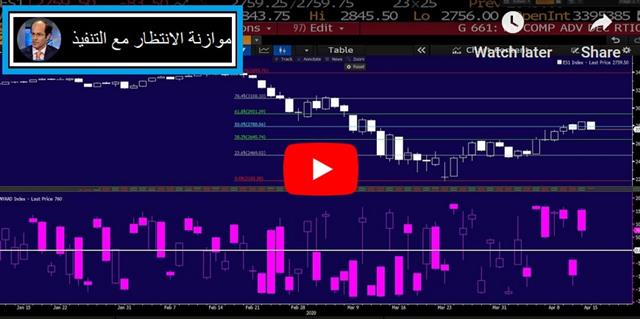Darkening Macro Picture, Soaring Bank Loan Losses
A shocking fall in the Empire Fed and some of the details of the US retail sales report illustrated the speed of the economic slowdown. The US dollar was the top performer while the Australian dollar lagged. US banks' loan loss provisions soared, with the BoA, Citigroup and Goldman taking $12.8bn of charges in Q1. These figures should imply sharp blow to the once-solid consumer sector. (more below) Oil and indices futures took a fresh dip moments ago after the release of newly-reported US figures on coronavirus, with deaths hitting 2,492 from Tuesday's 2,299 and 1,901 one week ago. Australian jobs and US initial jobless claims are due up next. There are 5 Premium trades currently open in FX, indices and crypto; 3 in the green, 1 flat and 1 in the red.
موازنة الانتظار مع التنفيذ فيديو للمشتركين
The Empire Fed report was expected to sink. It's an indicator that's close to real-time and it surveys manufacturing in the New York area, which is the current epicenter of the global outbreak. Yet no one thought it would be this bad.
The consensus estimate was for a fall to -35 from 21 in March. That would have been narrowly lower than the -34.3 bottom during the financial crisis. There were 43 estimates in the Bloomberg survey of economists and the worst was -60. Only two were below -45. The result was -78.2.It's a massive miss and it could harken a broader transition in the market where the focus moves to the economic crisis, rather than the financial one.
With regards to those bank loan loss provisions, not only they slashed US bank profits in half, but would also imply a lasting recession well into 2021. The blow to the US consumer is too grea, Not to mention additional loan losses in Q2 and Q3.
More evidence was in the March retail sales report. The headline at -8.7% compared to -8.0% expected was much closer to the consensus but it was still the worst monthly drop on record. It's within the data where there are hints on the state of the consumer. Spending on clothing was down 50.7%, Vehicles 25.6% and electronics 15%. The economy wasn't closed until halfway through the month.
As for market moves, the US dollar rebounded sharply, particularly against the commodity currencies. AUD/USD fell more than 2% after seven days of gains. The Canadian dollar also gave back much of its recent strength. That was helped by a surprise announcement of more QE from the Bank of Canada and another decline in oil prices.
In the day ahead, economic data will continue to be top-of-mind. The Australian March employment report is at 0130 GMT and forecast to show 30,000 job losses. Then at 1230 GMT it's US weekly jobless claims with another 5.5m job losses expected. That report will be a good test of the market's sensitivity to data, good or bad.
Latest IMTs
-
2026 Difficult but not Impossible
by Ashraf Laidi | Dec 22, 2025 20:06
-
Bank of Japan Massacre or Yawn?
by Ashraf Laidi | Dec 18, 2025 20:50
-
EURGBP Eyes 8920
by Ashraf Laidi | Dec 17, 2025 19:31
-
Only One Stock سهم واحد فقط
by Ashraf Laidi | Dec 16, 2025 19:58
-
Gold During Recessions & Bear Markets
by Ashraf Laidi | Dec 13, 2025 12:29








